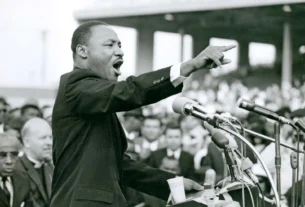Former President Donald Trump signed four executive orders last week to reform military policies and improve veterans’ services. The orders address military family support, veterans’ benefits, and systemic challenges within the Department of Defense. They are part of Trump’s ongoing focus on strengthening the military and honoring those who have served in the armed forces.
One key measure in the new orders is a proposal to improve healthcare services for veterans, ensuring they receive timely and adequate medical care. In addition, the executive orders outline steps to streamline the process for military personnel transitioning from active duty to civilian life, which has long been criticized for its complexity and lack of support. These initiatives reflect Trump’s commitment to addressing the needs of military families and veterans who face unique challenges after service.
The four executive orders also focus on improving military families’ overall quality of life, offering more excellent support in housing and education. The changes aim to make military life more sustainable for service members and their families, particularly as they relocate frequently or face the emotional and physical challenges of deployment. Trump’s administration has long prioritized military readiness, and these orders further solidify his stance on ensuring that military families receive the support they deserve.
While some have welcomed the orders, others have criticized them, arguing that they focus more on administrative adjustments than tackling the deeper, structural issues facing the military and veterans’ communities. Critics contend that these measures fail to address the core challenges, such as the high rates of PTSD and veteran homelessness, which continue to affect many former service members. Some argue that more direct action is needed to address these pressing issues rather than creating new bureaucratic processes.
Supporters, on the other hand, see the orders as a long-overdue recognition of the sacrifices made by military personnel and their families. The initiatives show a genuine commitment to improving the lives of veterans, offering them more access to resources and better opportunities to succeed once they return to civilian life. By focusing on the logistical and financial aspects of military life, Trump’s executive orders aim to ease some of the burdens faced by those who have served.
Additionally, the orders reflect Trump’s continued focus on military readiness, an issue that remains central to his public identity. Throughout his presidency, Trump has emphasized the importance of maintaining a strong and capable military, focusing on ensuring that the armed forces have the resources they need to remain effective. These executive orders are part of that broader agenda to bolster national security and support the men and women who serve.
The impact of the executive orders will likely depend on how they are implemented and whether they lead to tangible improvements in the lives of military personnel and veterans. While they represent a step forward in addressing some issues facing the military community, the real challenge will be ensuring that these changes translate into concrete benefits for those who need them most. With veterans’ problems continuing to be a priority for many Americans, the success of these orders will be closely watched in the months and years to come.
As discussions around military reform and veterans’ services continue to evolve, the four executive orders signed by Trump will contribute to the ongoing dialogue on how best to support those who have served in the armed forces. Whether or not these changes lead to significant improvements in the military and veterans’ communities, they continue to prioritize their needs and provide them with the resources they deserve.




